Astrodome Campaign Ideas, MaX Lanes, Pandemic Migration and More
The lead item this week is the Astrodome Conservancy spring campaign to re-engage the public on what to do with the Astrodome. My blog has had two main ideas over the years on the Astrodome – a “go big” one that requires big money, and a far more modest, affordable one as a climate-controlled weekend festival park. (other ideas here)
Honestly, I think the second one is the more realistic option right now, and could be very popular. The simple pitch for the second one is the world’s largest climate-controlled park. People love going to parks, but not during Houston’s extreme weather, especially summers and thunderstorms. Having an activated park full of activities and festivals on weekends that is always protected from heat and rain would be a very popular spot for Houstonians, especially families desperate to find affordable activities every weekend. And it could easily start very modestly and then expand over time with philanthropy (like has been happening with the zoo, MFAH, and HMNS) as well as parking charges to cover operations.
Moving on to this week’s items:
- Pretty excited to see TXDoT use my MaX Lanes branding in their 45N press release
- Live and Lets Fly blog on 7 must-try restaurants in Houston. As a local, I’ll say this list is pretty solid, but really barely scratches the surface of the incredible depth of Houston’s restaurant scene, honed from being where cultures mix – originally South + West + Mexico, but later from everywhere including Asian – plus the lack of zoning allowing absolute hypercompetition: good won’t cut it here, a restaurant better be great if it wants to survive. That Darwinian evolution has honed the scene over decades to where it’s finally getting the acknowledgment it deserves, like from GQ.
- Slate: Americans moved closer to family during the pandemic. What if they stay there?. This may be one of the larger drivers of all the out-of-state plates I see in Houston now – people moving back home to be closer to family.
“But there’s another factor I hadn’t considered, one that so far appears to be the single largest driver of pandemic-era migration: family.”
- Bloomberg: Silicon Valley Won’t Last Forever, and Texas Knows It – The birthplace of Dell and TI has been quietly building its tech industry since the 1930s. Now it has the chance to move into the spotlight. Includes a nice excerpt on my alma mater:
“Part of the reason for this trajectory had to do with another institution that continues to play a key role in driving technological innovation in the state: Houston’s Rice University, which played a role comparable to Stanford’s vis-à-vis Silicon Valley. In fact, many of the early players in Silicon Valley actually moved to California after graduating from Rice, constituting what is sometimes called the “Rice Mafia.”
How appropriate, then, that Rice would play a key role in the next step in the rise of Texas. In 1961, the university donated more than a thousand acres of land for the construction of what became known as the Johnson Space Center, flooding a once-provincial city with literal rocket scientists. Like Silicon Valley, where government contracts and connections proved essential in getting the region off the ground, Houston’s leadership in the space race kick-started a host of related industries.”
- NYT: A Letter to My Liberal Friends – If you want to know what worries conservatives, look at California. (hat tip to George for an archive link)
“If California is a vision of the sort of future the Biden administration wants for Americans, expect Americans to demur.”
- The Atlantic: Superstar Cities Are in Trouble – The past year has offered a glimpse of the nowhere-everywhere future of work, and it isn’t optimistic for big cities. It includes four predictions and a conclusion I would never have expected to see in a magazine like The Atlantic!
- The rise of the supercommuter
- The decline of the coastal superstar cities
- The rise of the rest
- The next Silicon Valley is nowhere
“As an urban resident of Washington, D.C., writing from my dining-room table, my claim is not that I believe the internet could or should replace the riotous physical-world collision of urban work, culture, art, and life. My humbler assertion is that 2020 has punctured my confidence that the internet cannot encroach on the benefits of urban density and proximity. Going forward, many fledgling companies may agree, as they find that the city in the cloud essentially acts as a more accessible version of the city on the Earth, eerily reproducing its forces of agglomeration, specialization, and convenience. The past 12 months have offered a glimpse of the nowhere-everywhere future of work.”
This piece first appeared on Houston Strategies.
Tory Gattis is a Founding Senior Fellow with the Center for Opportunity Urbanism and co-authored the original study with noted urbanist Joel Kotkin and others, creating a city philosophy around upward social mobility for all citizens as an alternative to the popular smart growth, new urbanism, and creative class movements. He is also an editor of the Houston Strategies blog.
Photo credit: Ed Schipul via Flickr under CC 2.0 License.

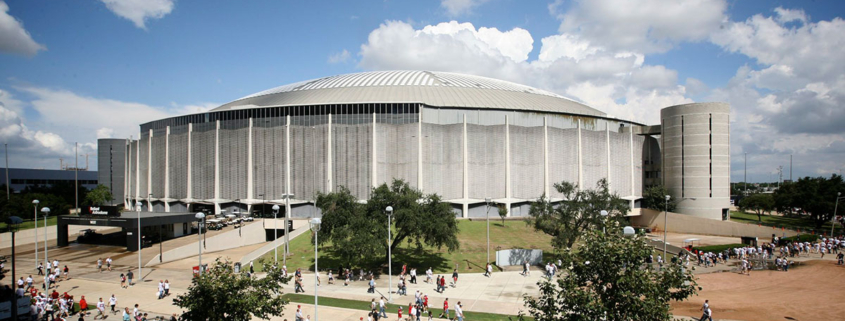
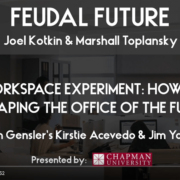
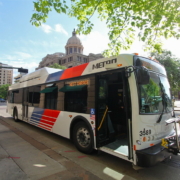 Roy Luck
Roy Luck
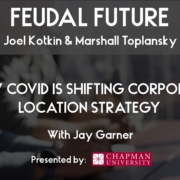
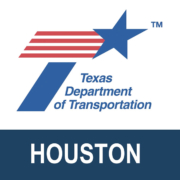
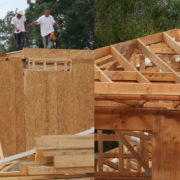

 Patrick Feller, used under CC 2.0 License
Patrick Feller, used under CC 2.0 License